Abstract
Whereas laboratory investigations have elucidated the mechanism of sorption of residual insecticides and demonstrated that their persistency is determined by a number of physico-chemical factors and is therefore theoretically calculable, the variables encountered in the field may produce results in apparent conflict with those theoretically expected. Attempts to enhance persistency through the prevention of sorption, although promising, have so far not been fully successful. It is consequently also necessary to assess the residual effectiveness of insecticides, “effectiveness” here being viewed as a biological effect expressed in terms of the mosquito mortality produced. For this purpose bio-assay tests have been used, but with very variable results, and it is suggested that a study of the bio-assay technique itself is needed. This should be conducted in parallel with chemical determinations of the total amount of insecticide present both on and below the sprayed surface.
Full text
PDF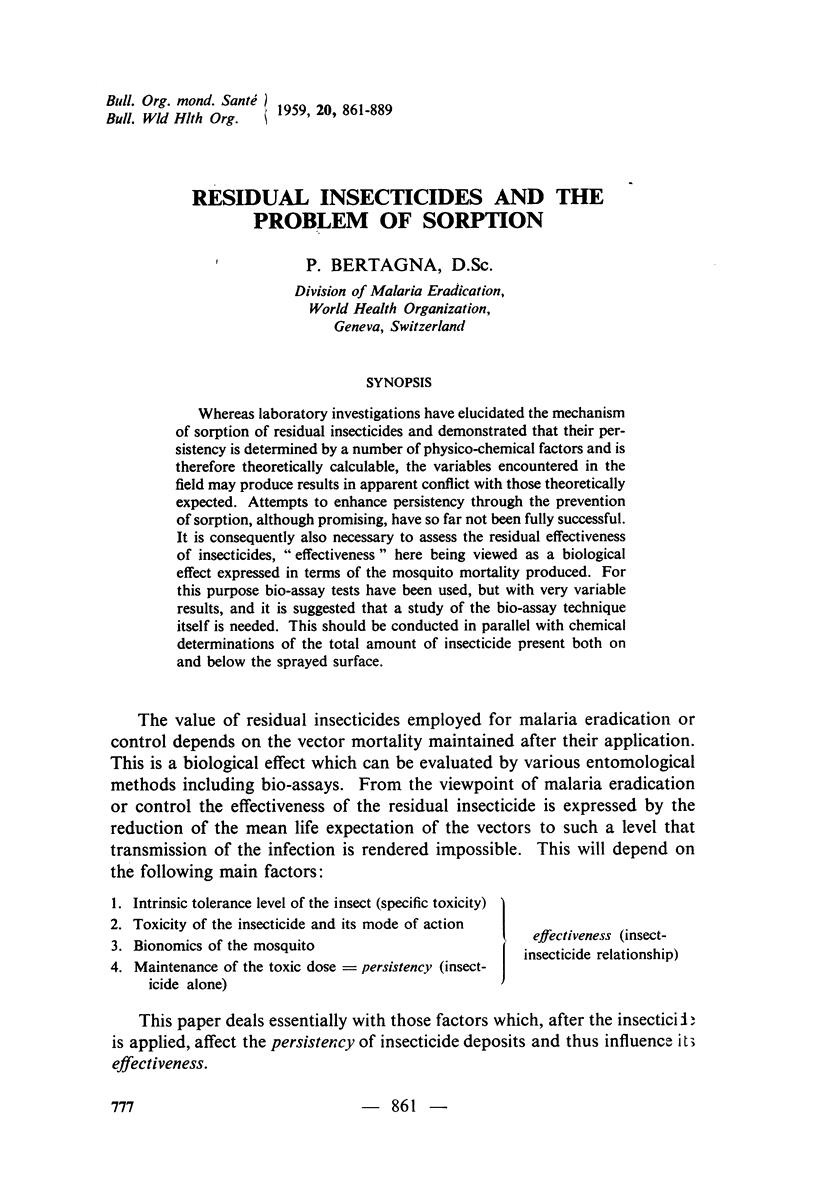
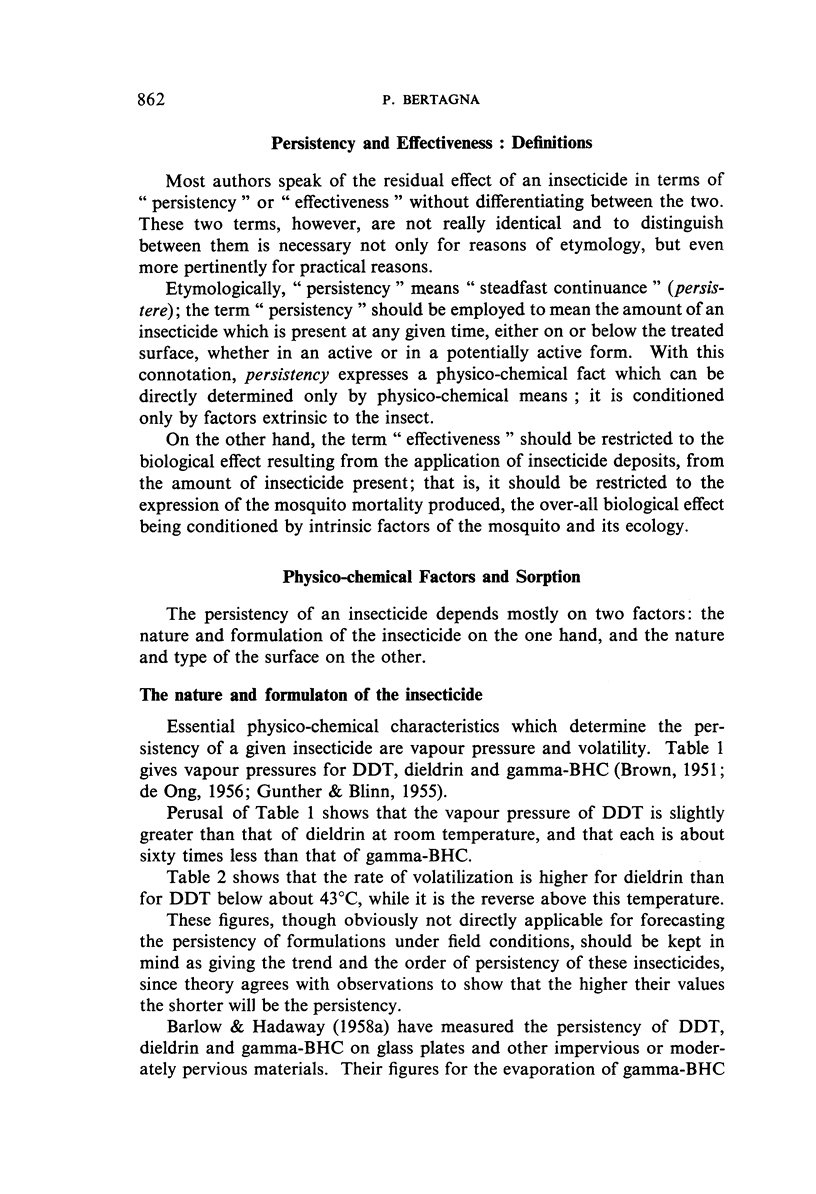
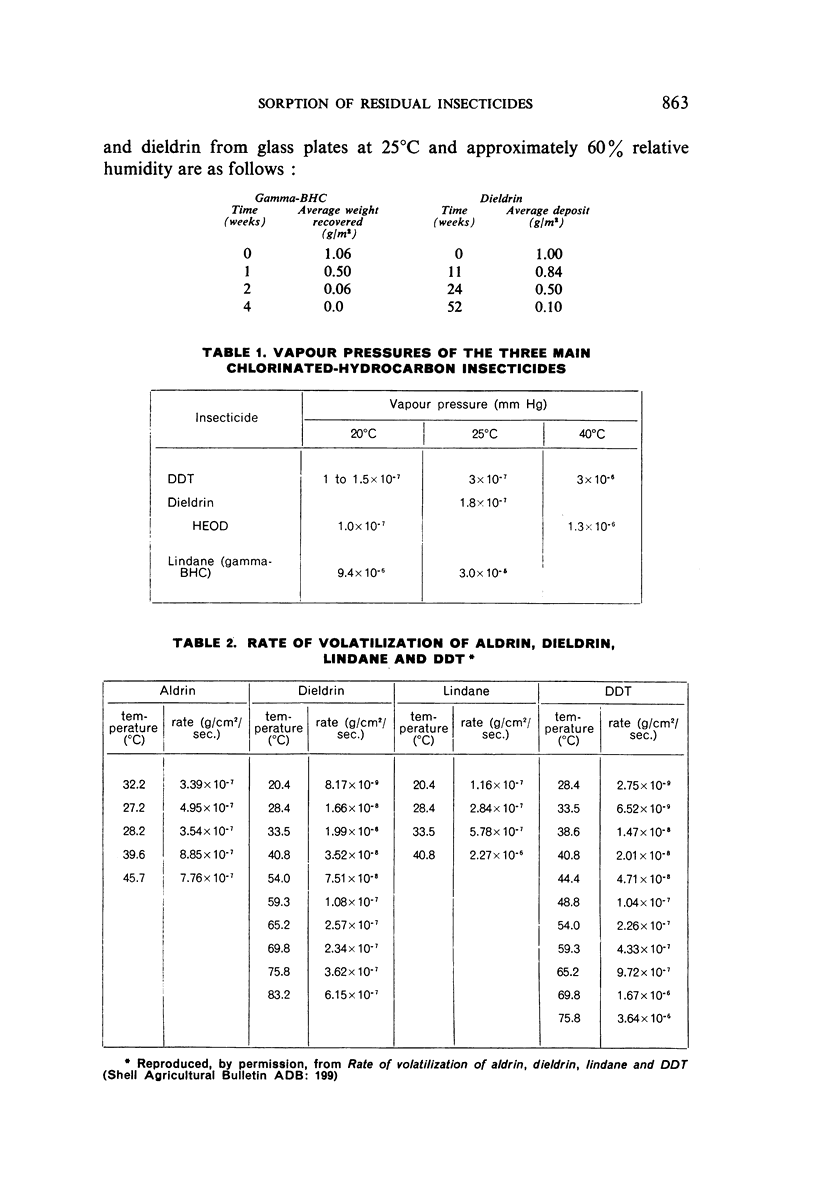
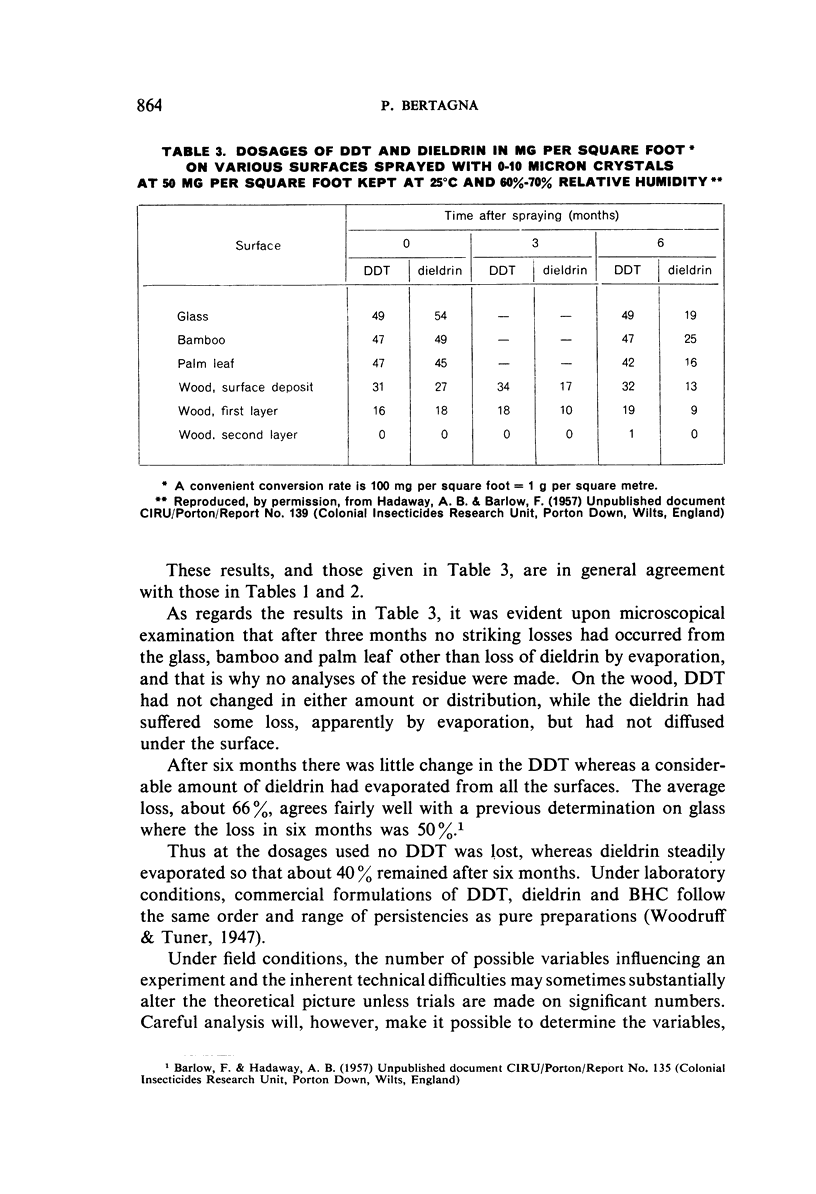
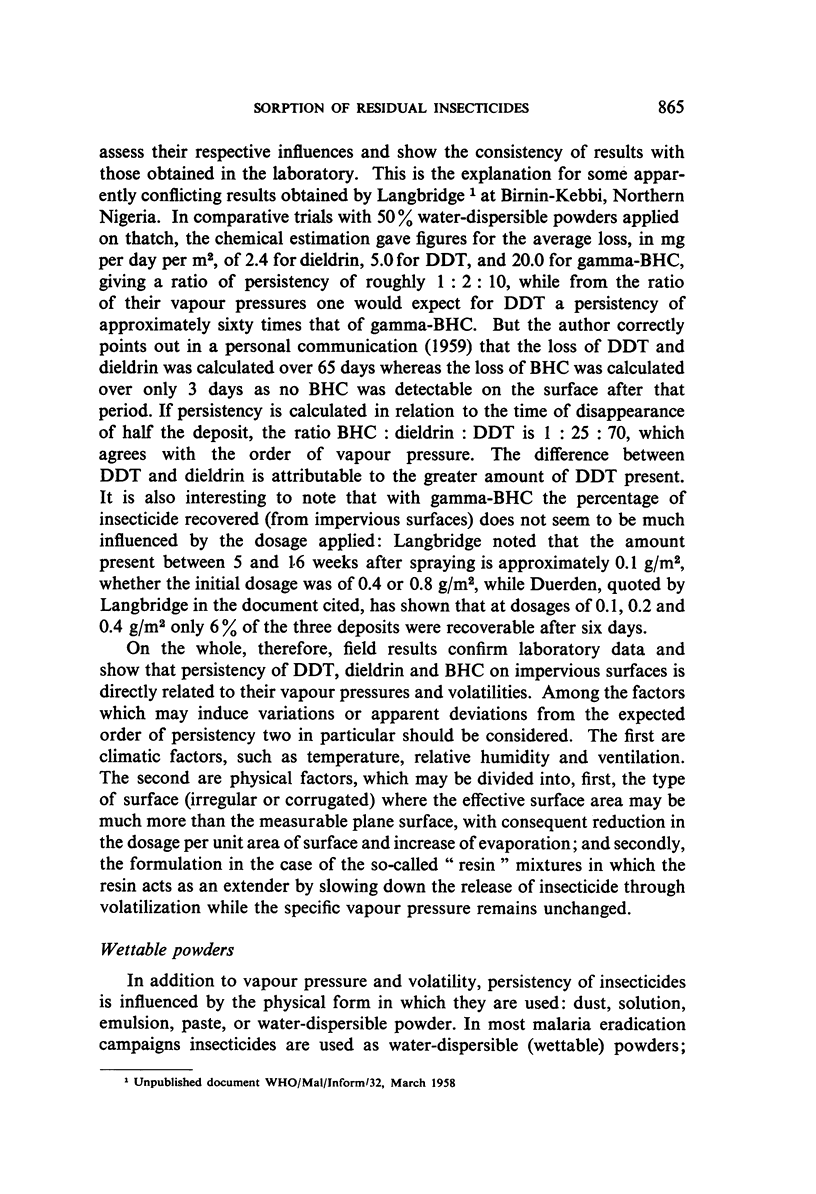
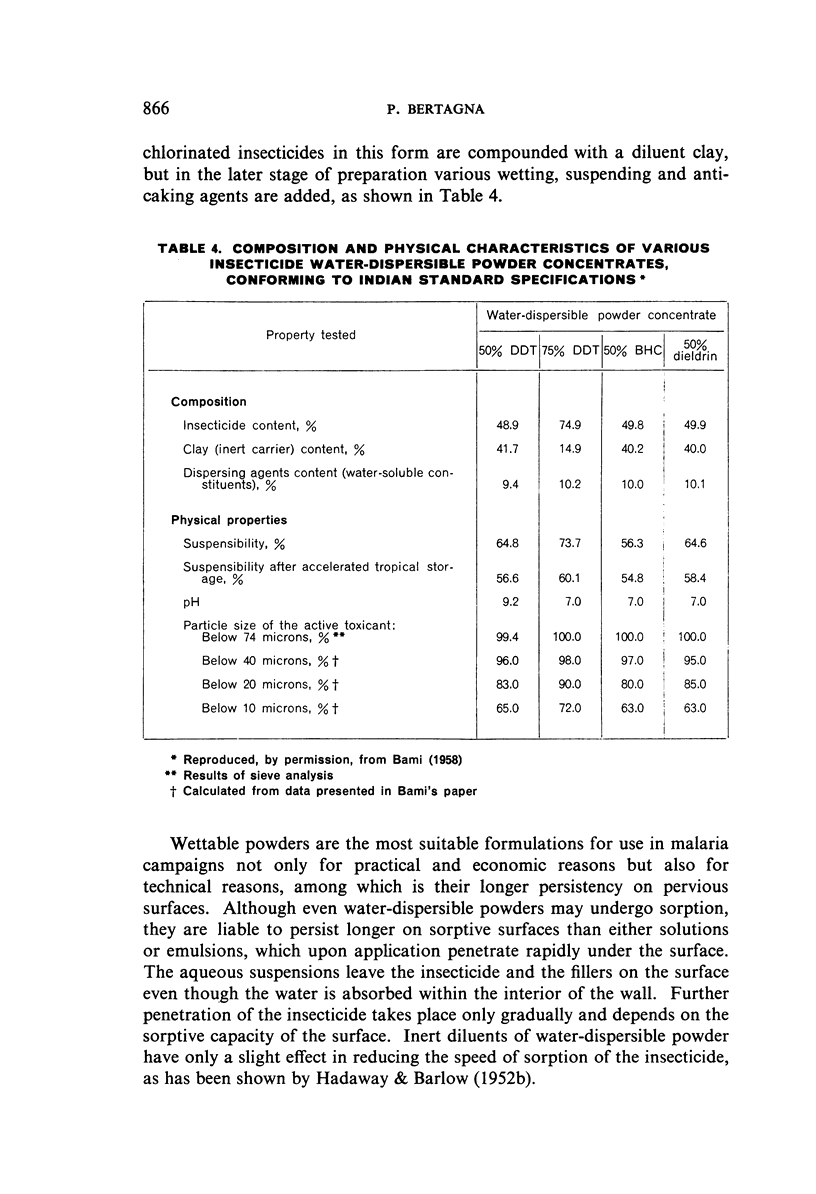

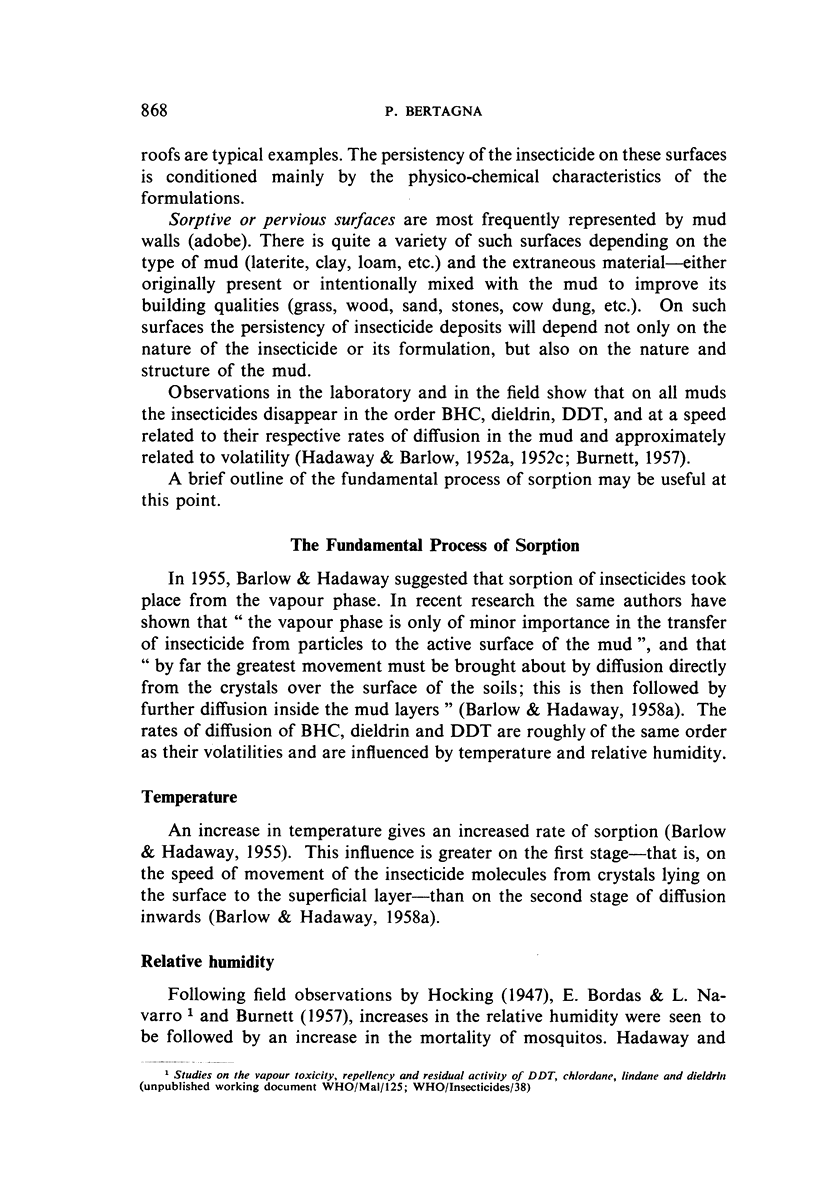
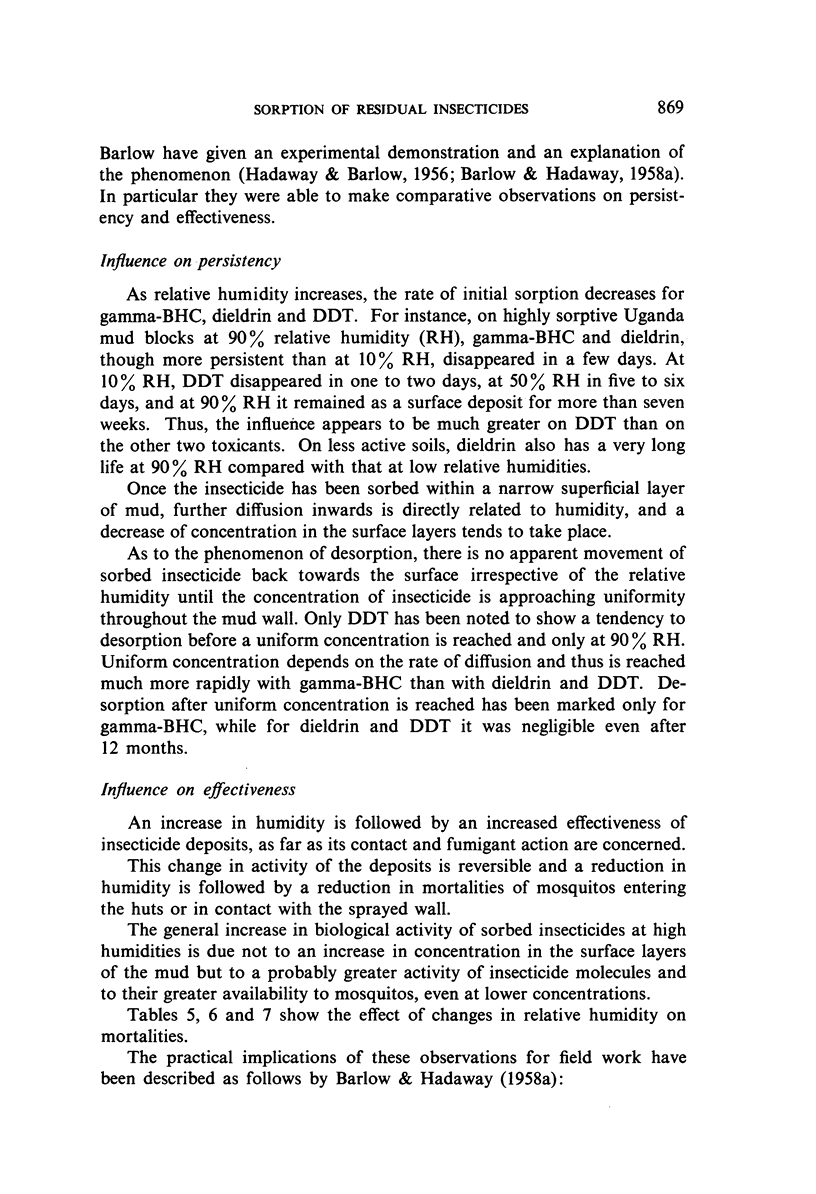
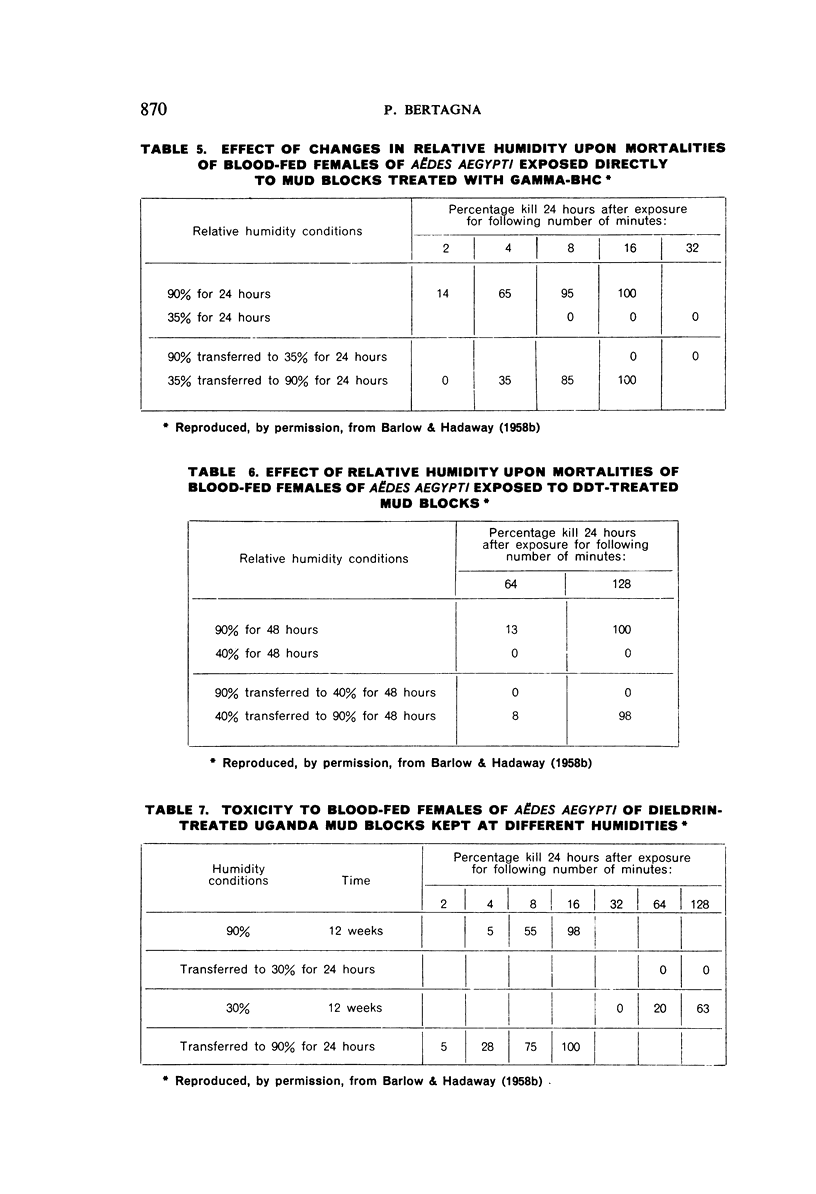
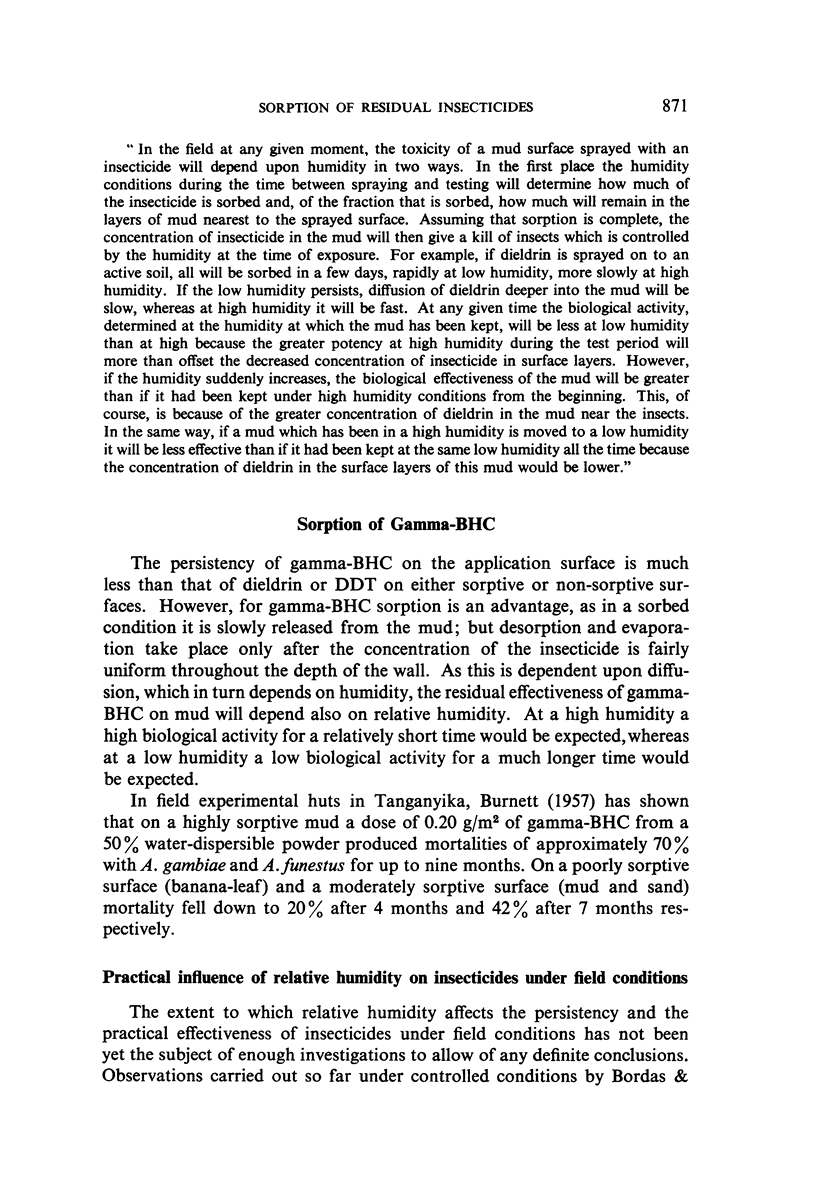

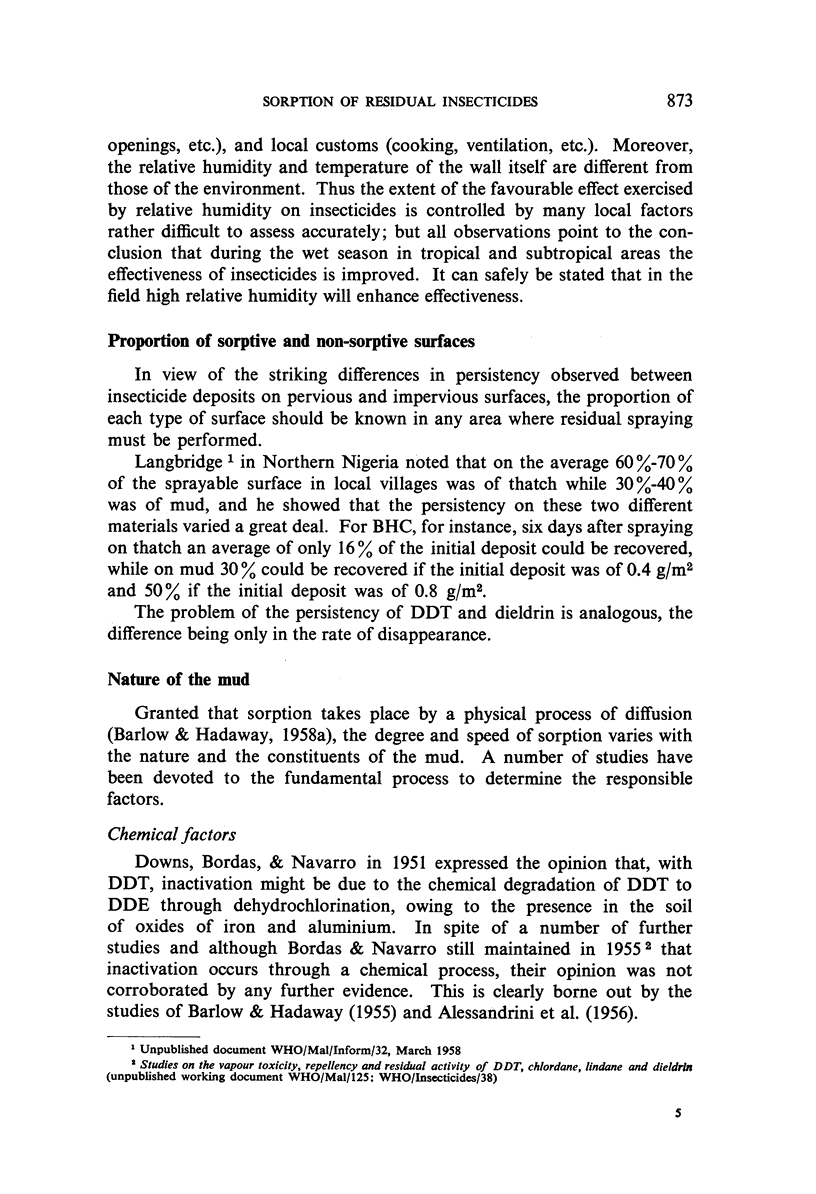
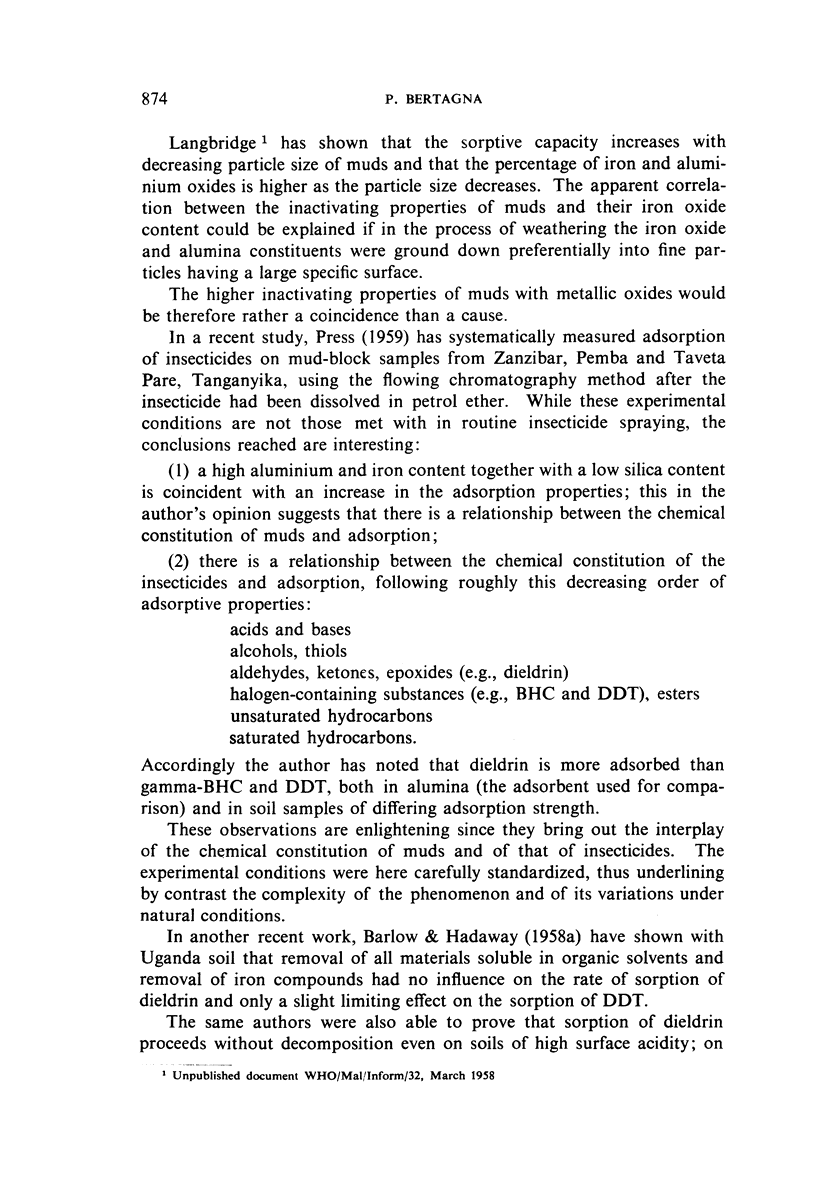
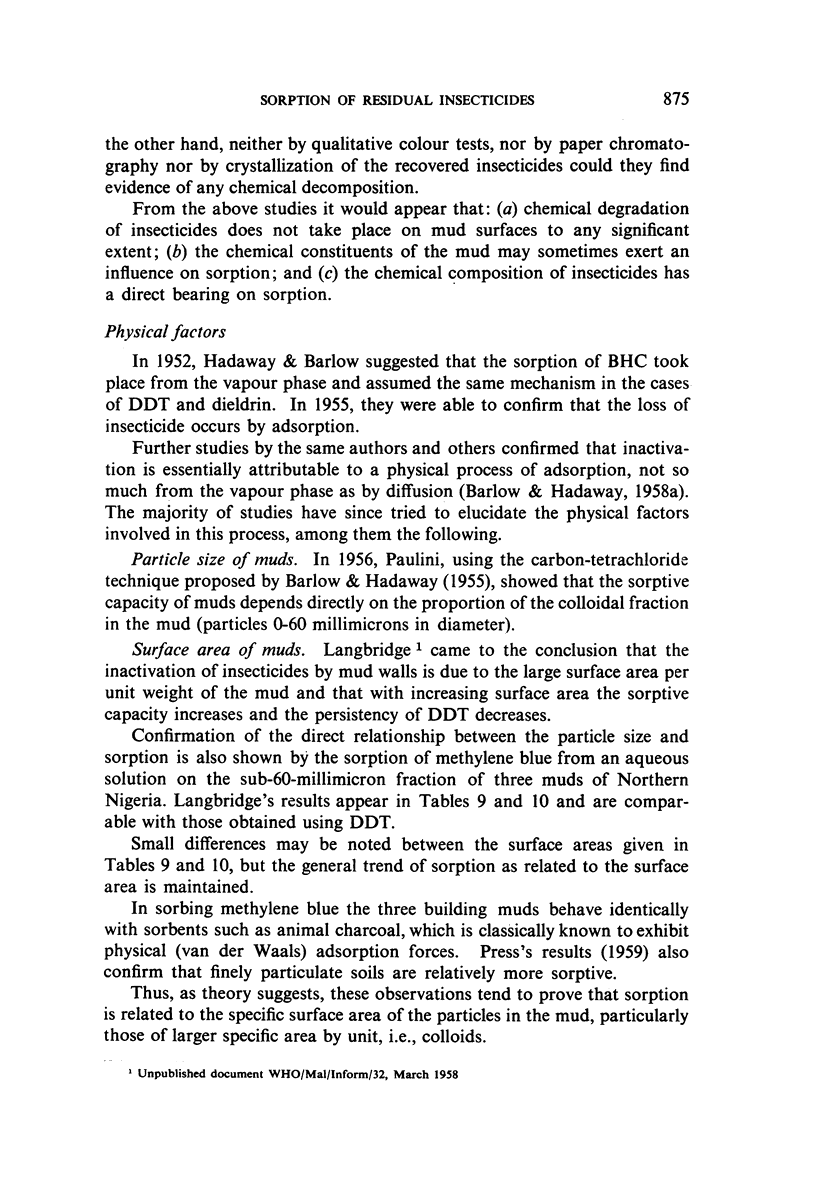
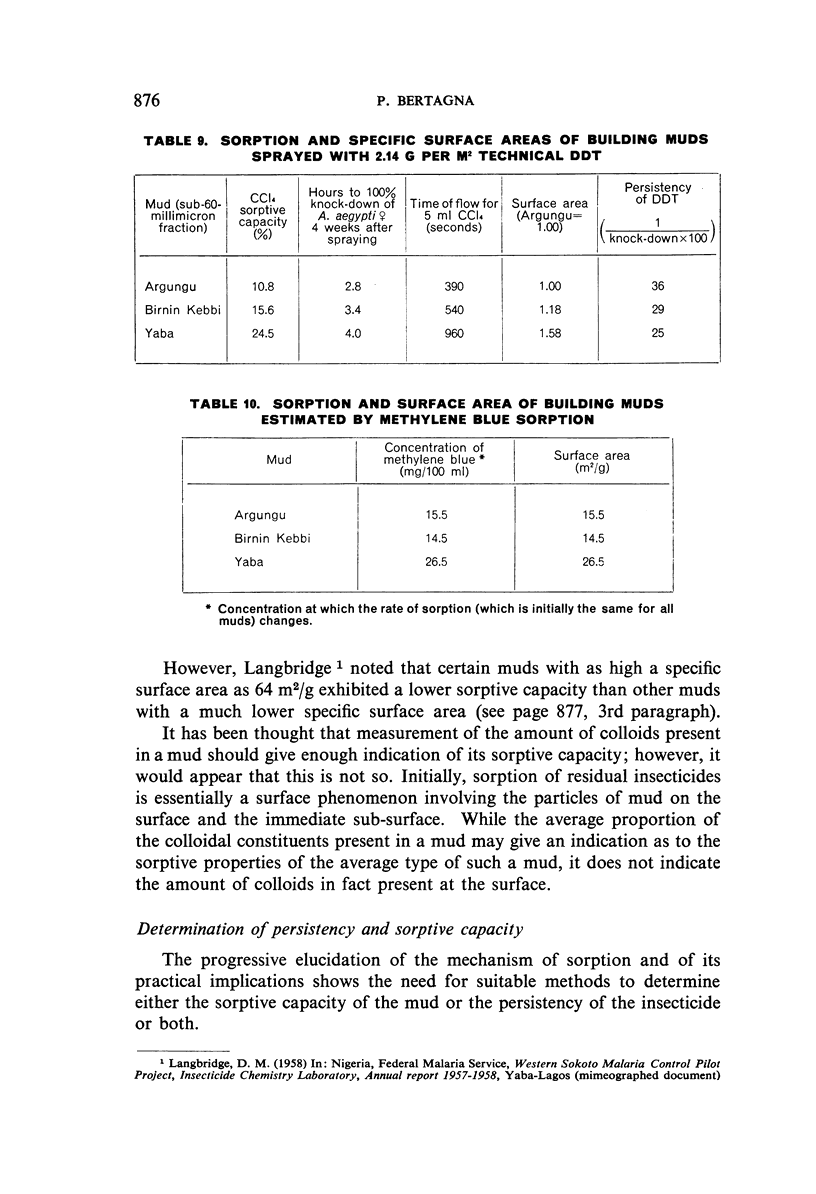
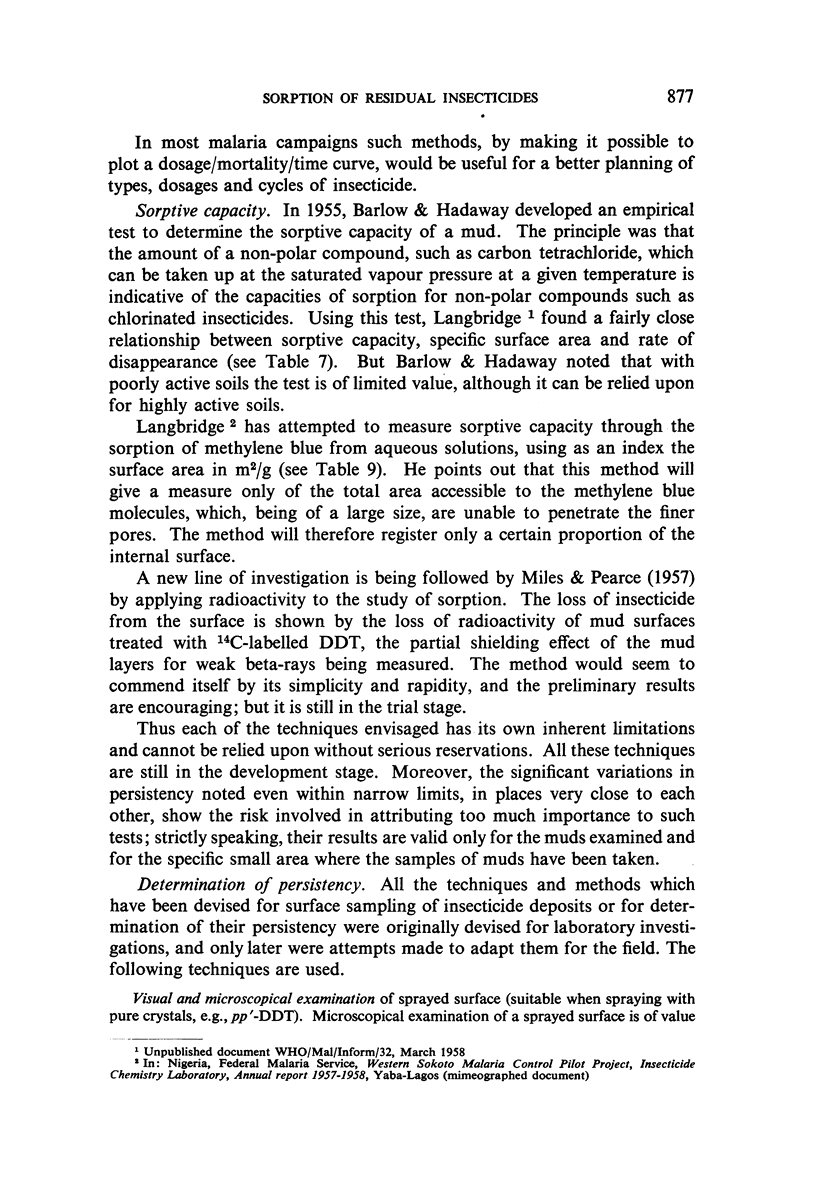
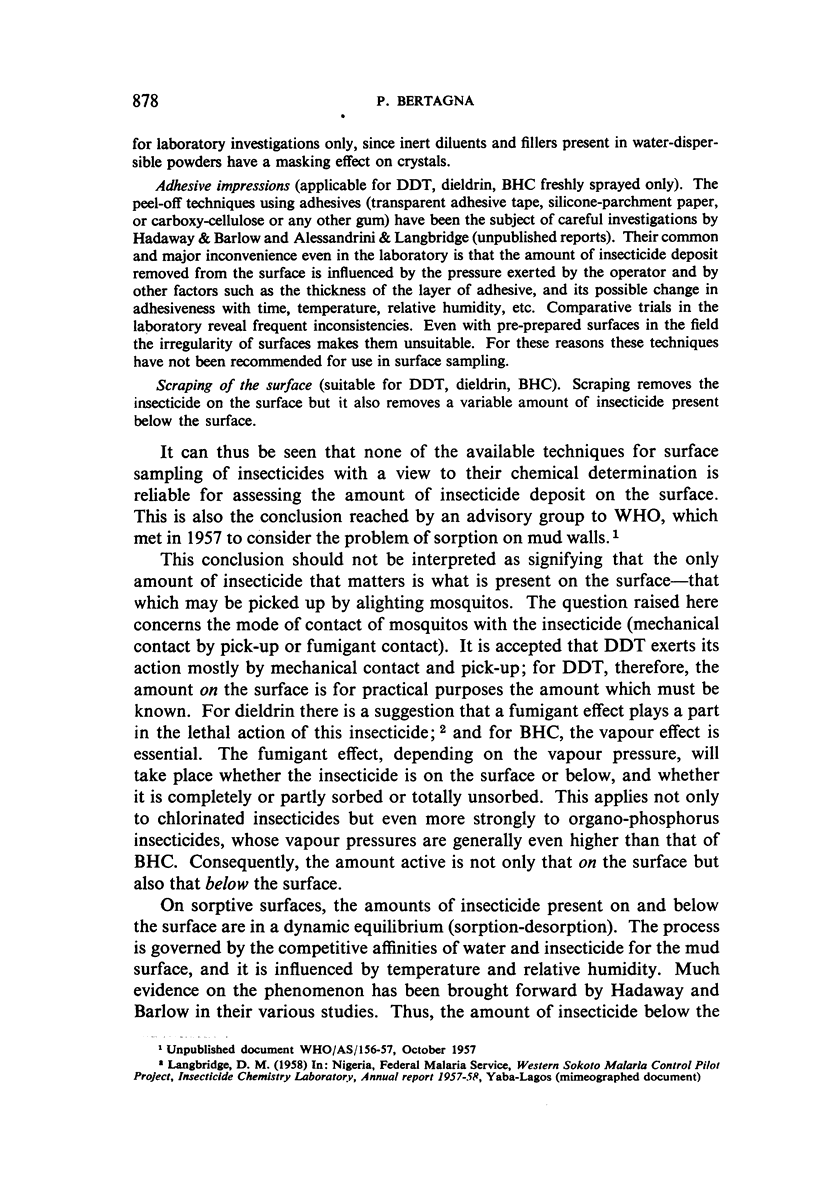
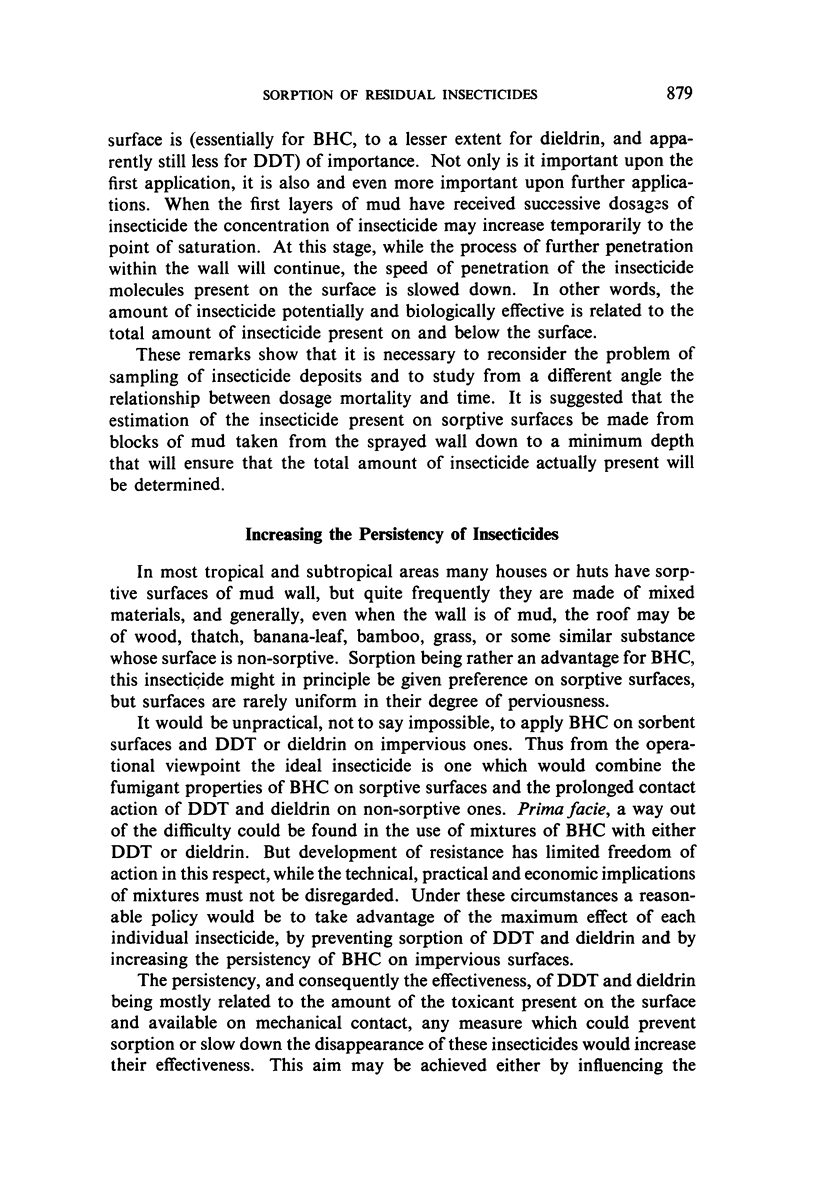
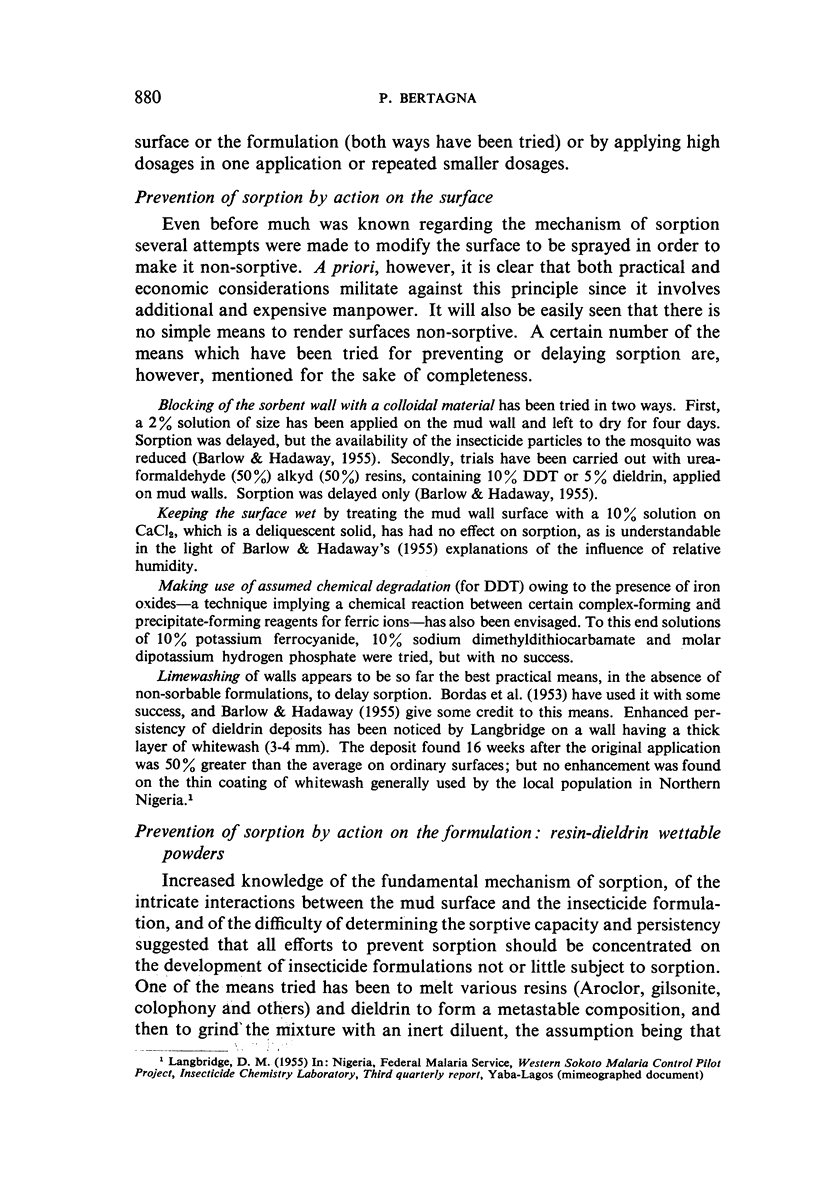
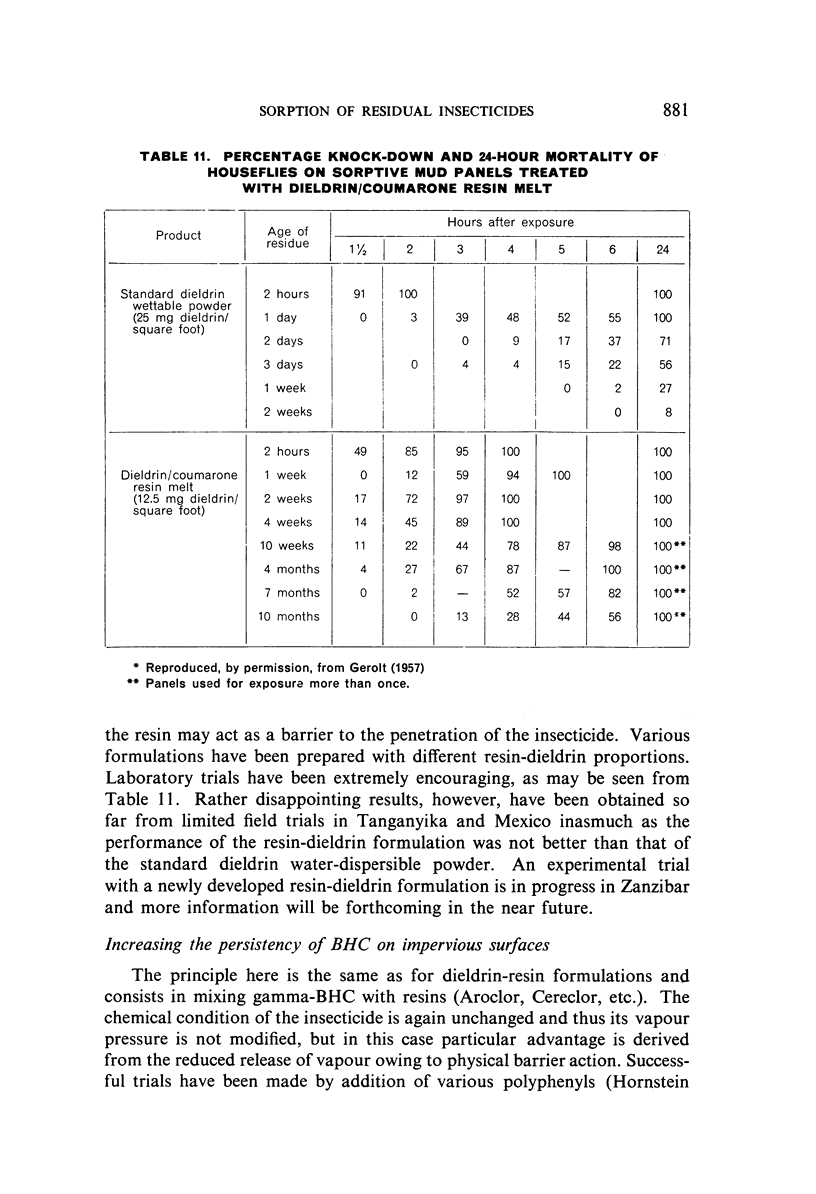
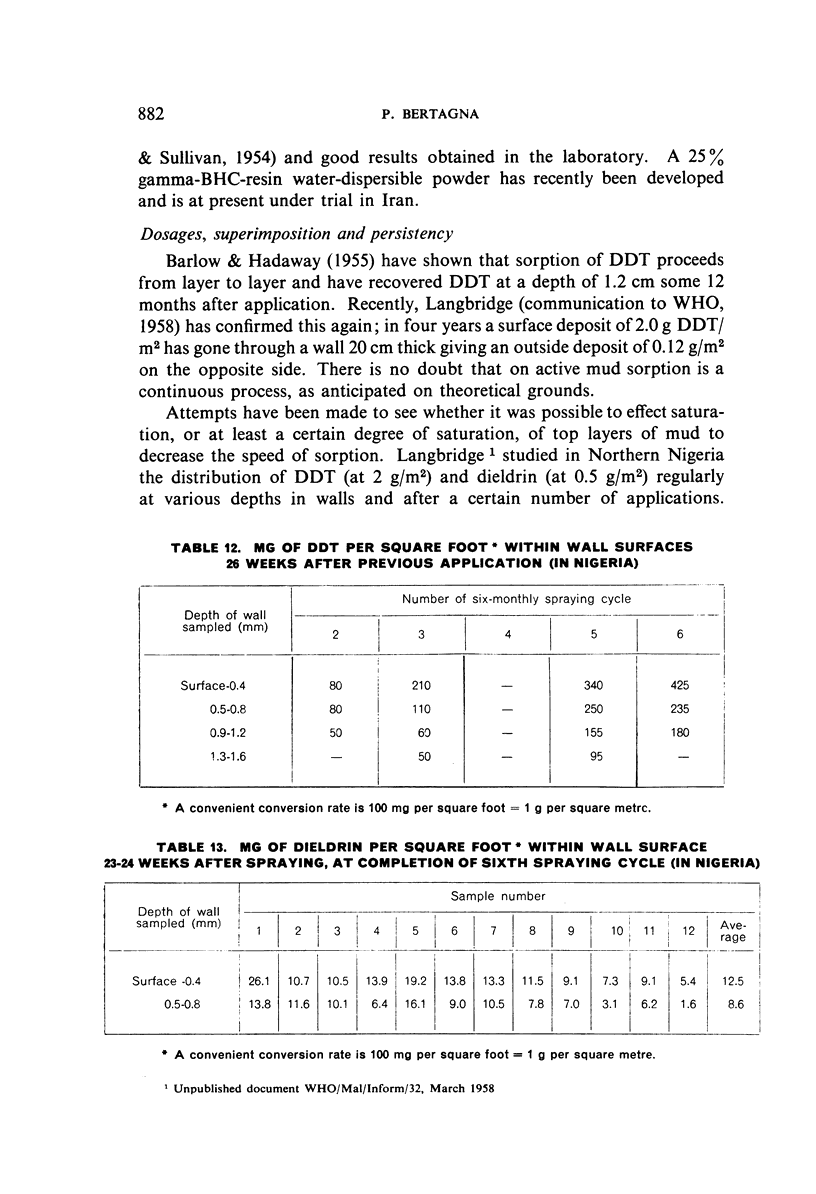
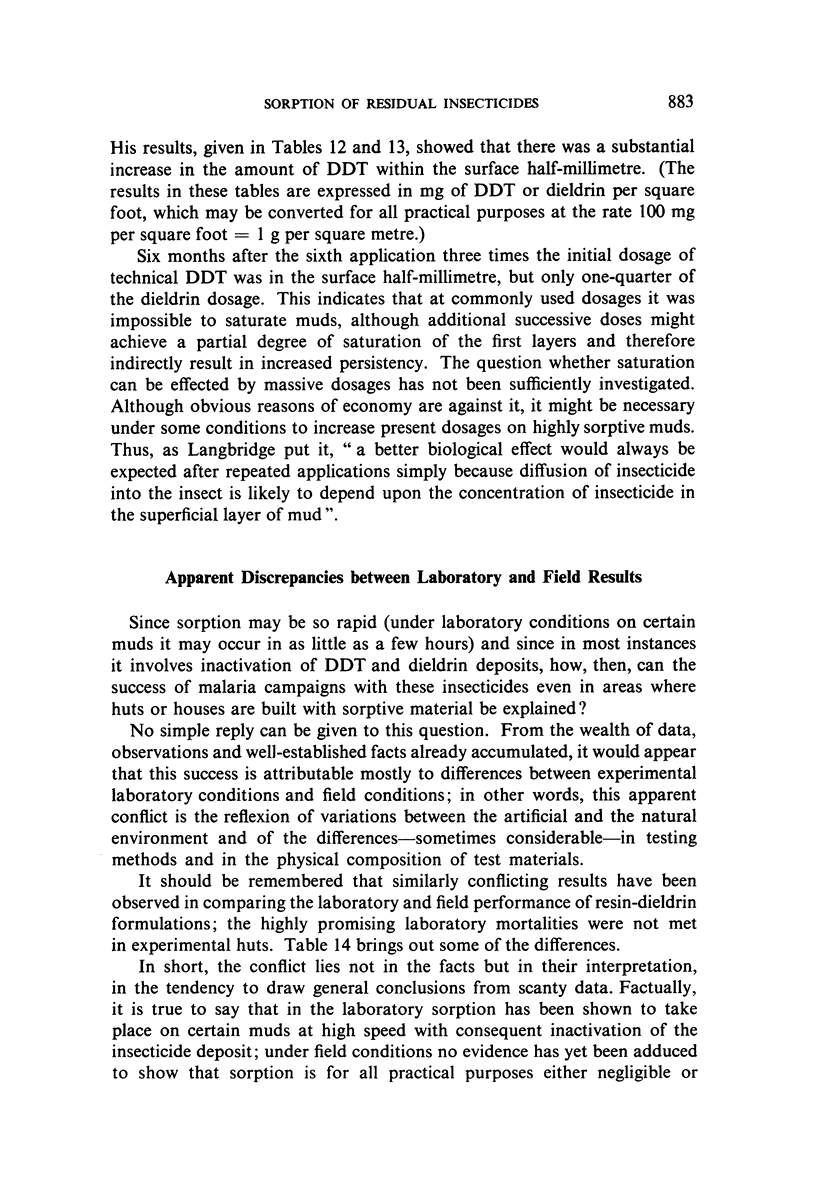
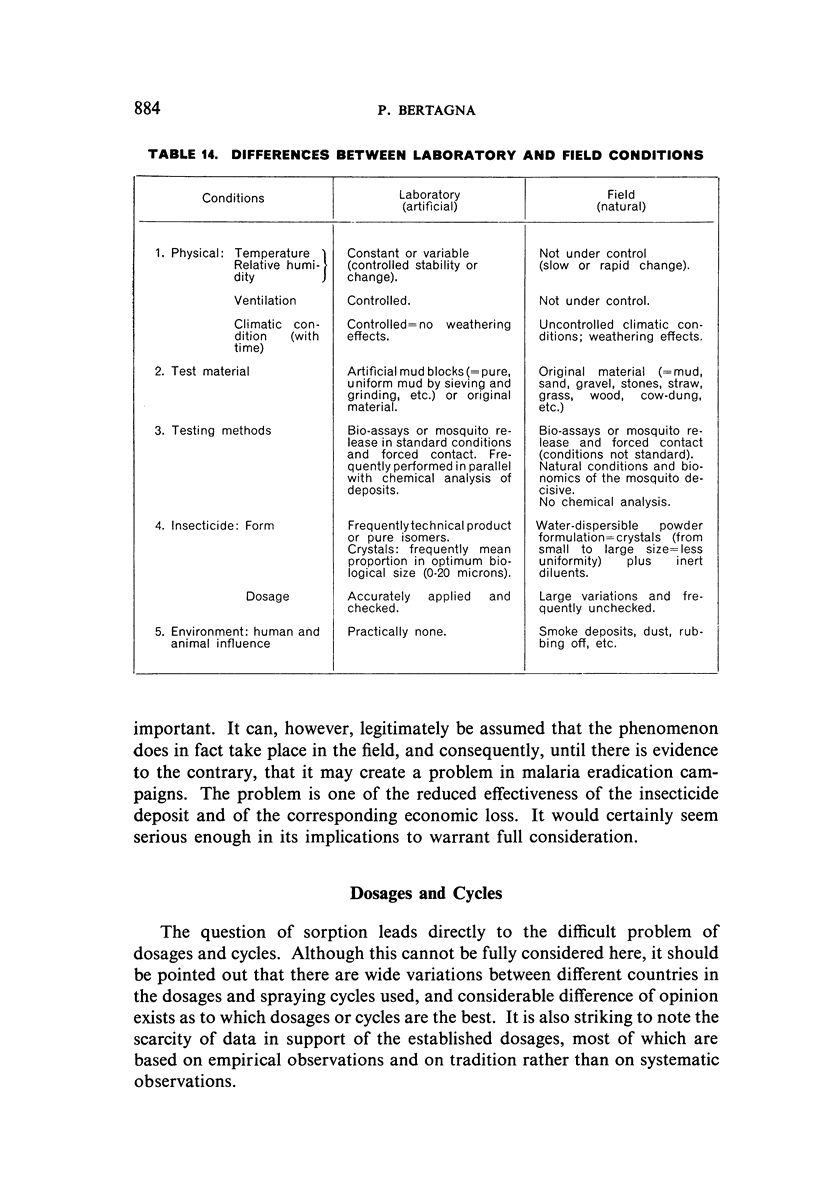
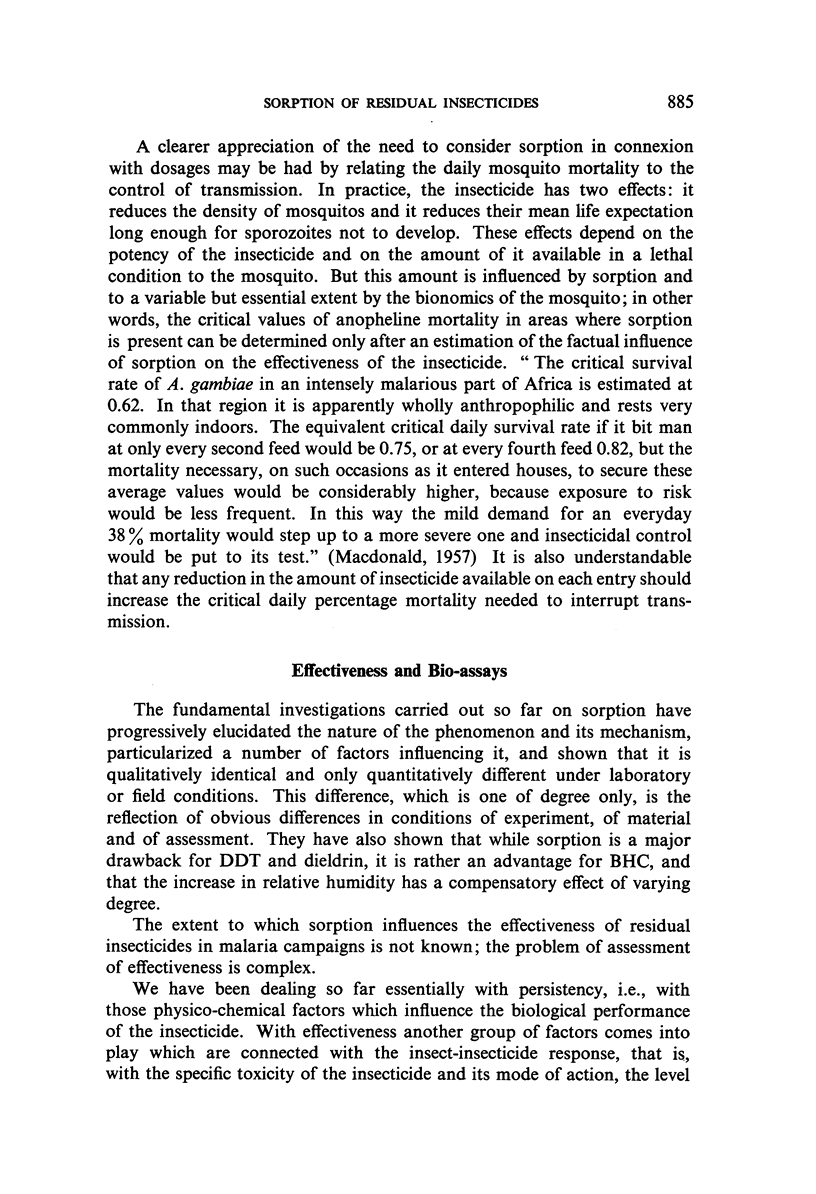
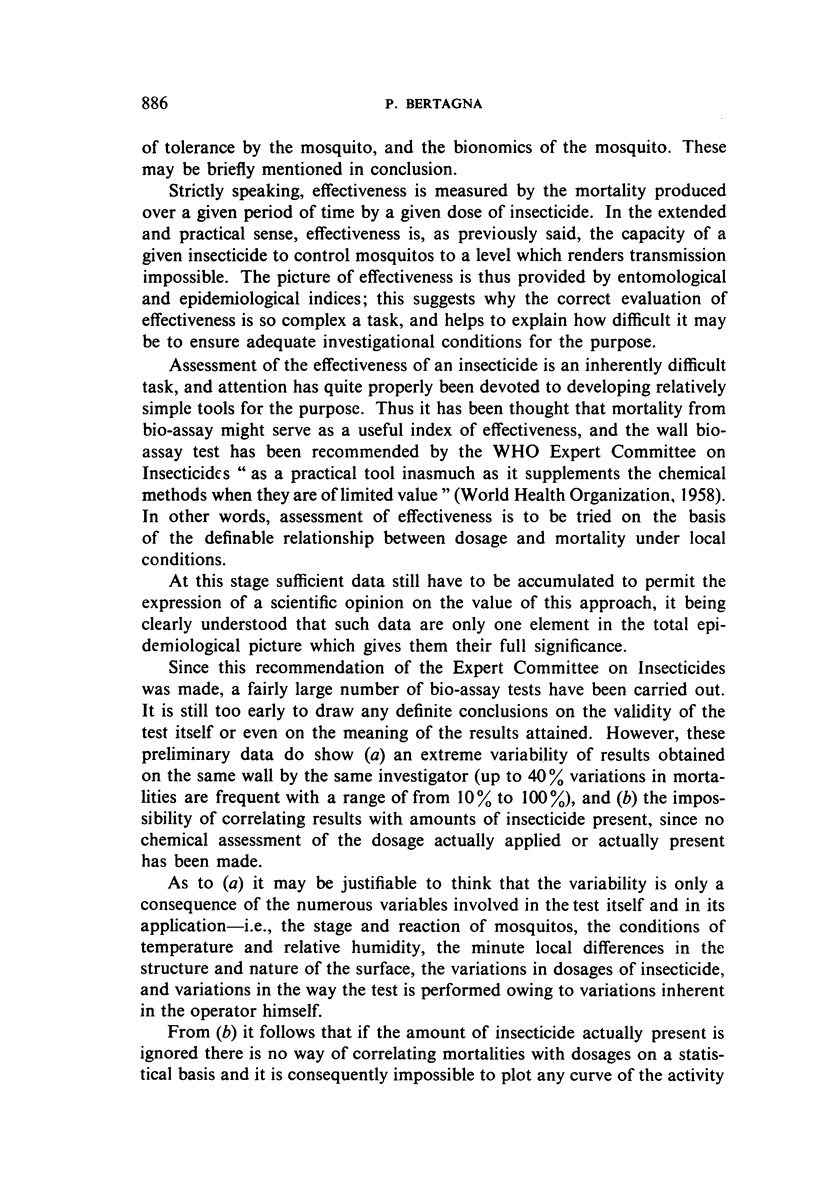
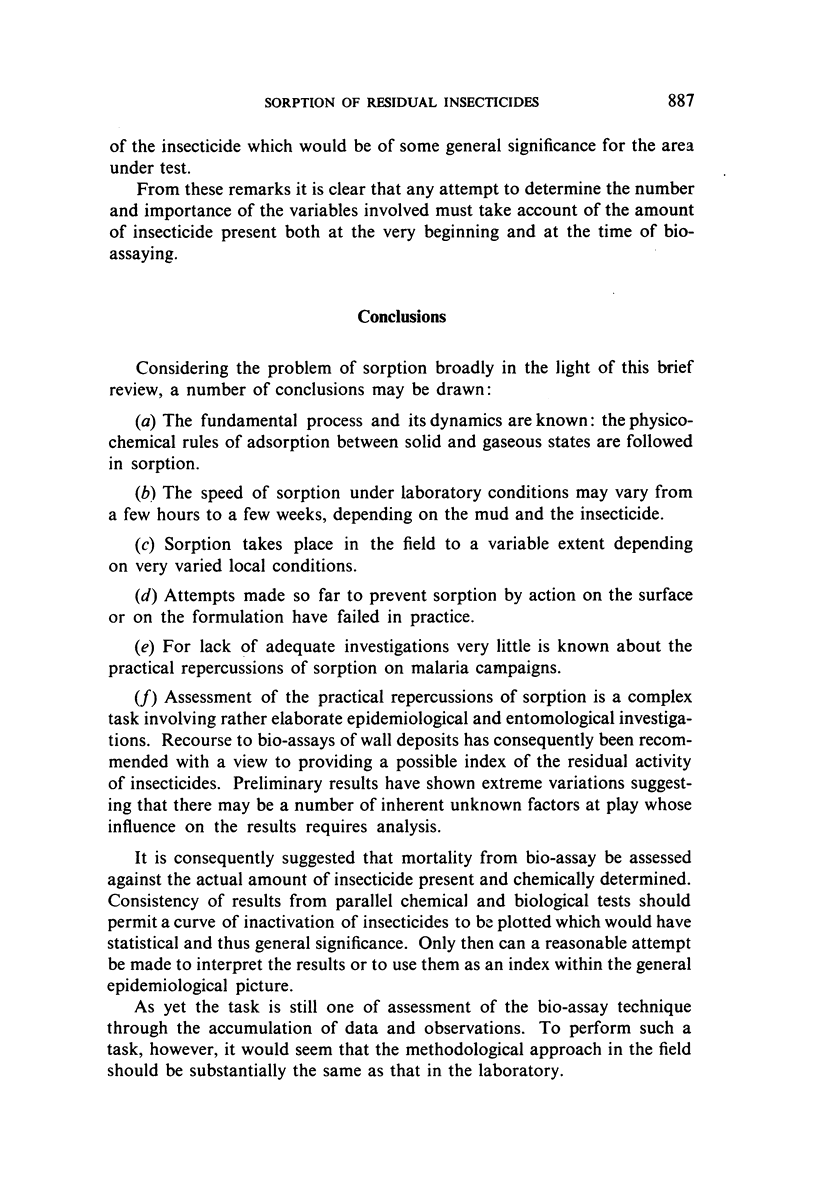
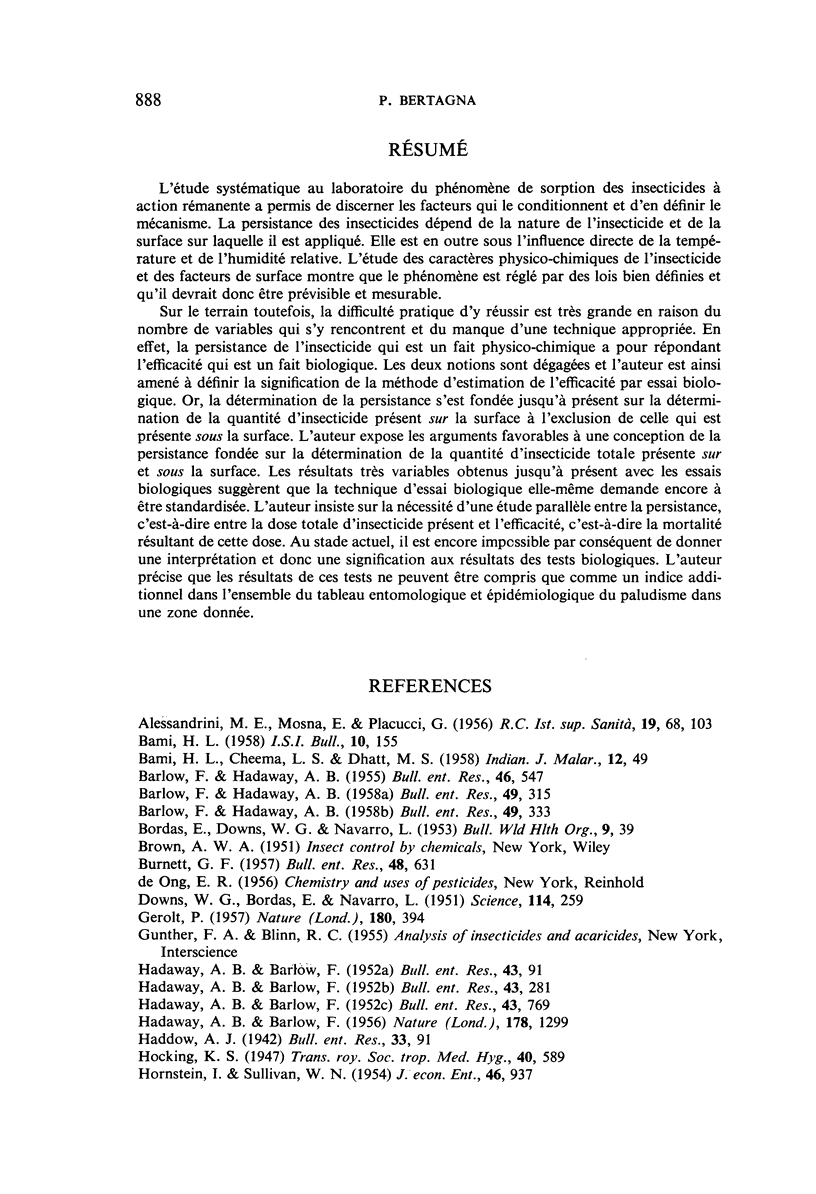
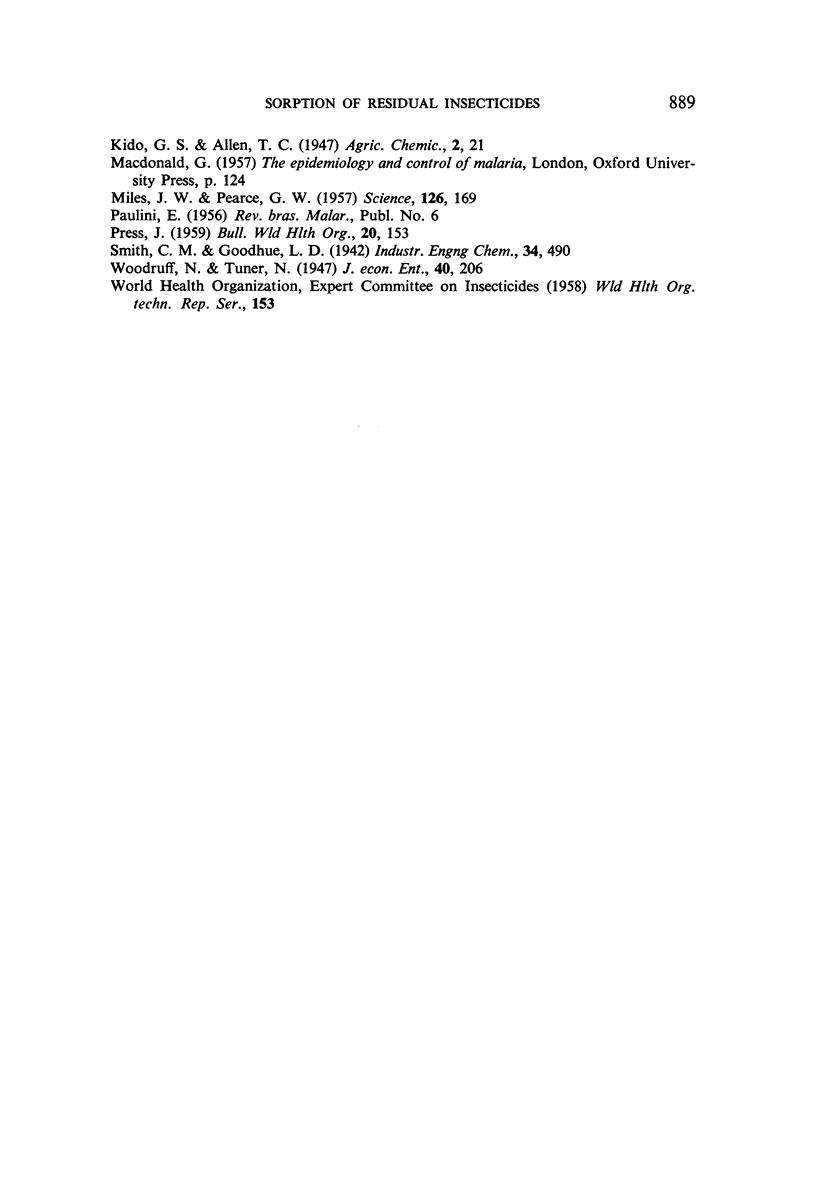
Selected References
These references are in PubMed. This may not be the complete list of references from this article.
- BAMI H. L., CHEEMA L. S., DHATT M. S. Studies on particle size distribution in relation to dispersibility. II. 75 Per cent D. D. T., 50 per cent B. H. C. and 50 per cent dieldrin water dispersible powders. Indian J Malariol. 1958 Mar;12(1):49–56. [PubMed] [Google Scholar]
- BARLOW F., HADAWAY A. B. Effect of changes in humidity on the toxicity and distribution of insecticides sorbed by some dried soils. Nature. 1956 Dec 8;178(4545):1299–1300. doi: 10.1038/1781299a0. [DOI] [PubMed] [Google Scholar]
- BORDAS E., DOWNS W. G., NAVARRO L. Inactivation of DDT deposits on mud surfaces. Bull World Health Organ. 1953;9(1):39–57. [PMC free article] [PubMed] [Google Scholar]
- DOWNS W. G., BORDAS E., NAVARRO L. Duration of action of residual DDT deposits on adobe surfaces. Science. 1951 Sep 7;114(2958):259–262. doi: 10.1126/science.114.2958.259. [DOI] [PubMed] [Google Scholar]
- MILES J. W., PEARCE G. W. Rapid method for measurement of rate of adsorption of DDT by mud surfaces. Science. 1957 Jul 26;126(3265):169–170. doi: 10.1126/science.126.3265.169. [DOI] [PubMed] [Google Scholar]


